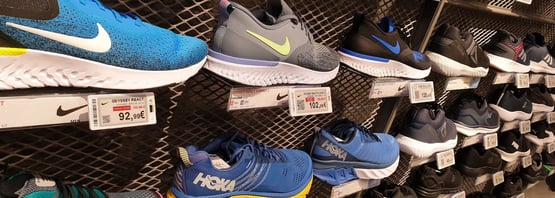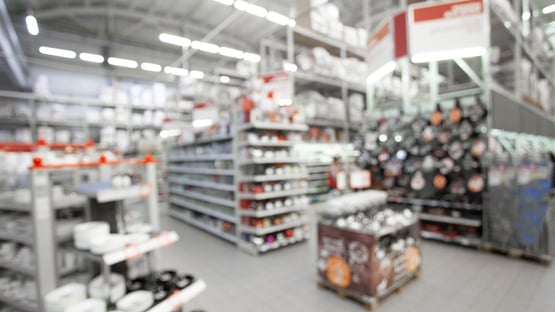Brick-and-mortar stores are embracing dynamic pricing to compete with online retailers, and experts say consumers are more receptive to changing prices than they think. This is the conclusion that Mark Ellwood draws in his article in Business Insider on September 23, 2020, where he interviews Nils Hulth, CPO at Pricer, and Aggelos Stefanou, Intersport’s IT Supervisor in Greece, Cyprus and Balkans.
Below is a summary of the article. Read the full article here.
At the Intersport flagship store in Athens, Greece, a customer keen to shop for sneakers will be startled at what they see in the huge footwear department: prices that are changing, quite literally, in front of their eyes. The store has swapped traditional price labels for ESLs, electronic shelf labels, which use e-paper to display prices that can then be changed, within seconds, at the press of a button.
For retailers like Intersport, there are multiple upsides with an ESL platform, as it allows the firm to be nimbler by responding in real-time to competitors' promotions. Compare this to the traditional discount cycle, where prices were adjusted once weekly.
Saved around a month’s worth of staff time per year
According to Aggelos Stefanou, switching to ESLs in the shoe department has saved around a month’s worth of staff time per year, which can be deployed on customer service. QR codes on the ESLs also allow shoppers to scan items in store and be directed to a detailed review page on Intersport's website, and they can buy directly online if a certain size is out of stock.
Dynamic pricing is a core strategy for online retailers, who are renowned for their price elasticity, but conventional signage precludes brick-and-mortar stores from such agility — ESLs change the game.
Nils Hulth, chief product officer at Pricer, said that Intersport is an outlier in adopting ESLs — the most enthusiastic sectors right now, he said, are home improvement, grocery, and consumer electronics.
“Some online retailers change prices 100 times per day because they all have to match Amazon,” he said. “But ESLs allow anyone to change a lot, too.”



